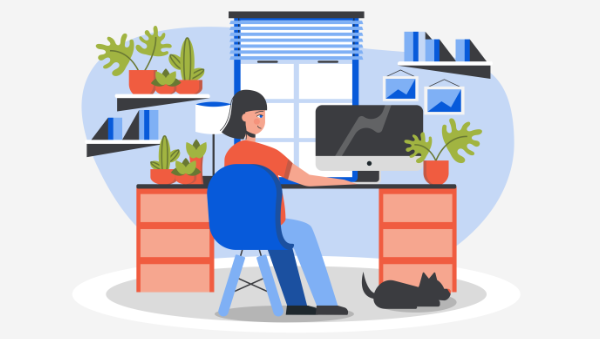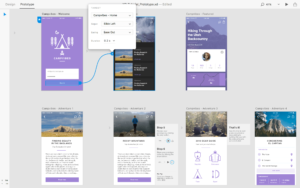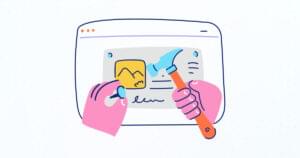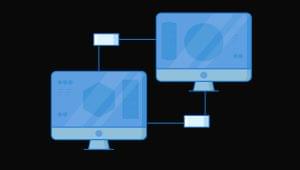Home Office Setup Essentials: 6 Principles to Improve Your Space

A good home office setup is the sum of its parts. Great Wi-Fi isn’t going to offset the mounting frustration of a wobbly chair. Calming natural lighting won’t be able to shut those kids up from across the street. To create a space that cultivates productivity, everything has to work in harmony.
Although some specifics will likely differ depending on your job (software engineers are probably going to want a more powerful computer than copywriters), here are six essentials for building the best home office setup imaginable.
Key Takeaways
- Establish a distinct workspace within your home, physically or psychologically separate from your relaxation and sleeping areas, to maintain work/life balance.
- Minimize distractions with white noise machines, sound-canceling headphones, or anti-procrastination apps, and optimize lighting with natural light or full-spectrum bulbs.
- Invest in good furniture, keep your workspace neat, and personalize it with items that inspire positivity and motivation for a more productive work environment.
1. Create a Distinct Space to Work In
No matter how badly many of us loathe the morning commute, going from one’s home to a distinct secondary location helps create that thing we love to call a work/life balance. On one side of the scale is the office — aka work — and on the other side of the scale is your home — aka life. But if you work from home, work and life gets all crammed together on one side of the scale.
To regain that balance, you have to create a distinct work space that’s either physically or psychologically separate from the space in which you relax and sleep. In other words, the place where you work can’t also be the place you don’t do work.
If you have a home with extra rooms, this should be relatively easy. Designate one of those rooms as your office. Boom. We’re done.
However, if you live in a home or apartment with no extra rooms, you’ll have to get a little creative. If you can’t put a door between your home and your work, put up a room divider or a curtain. Heck, make your own divider with plants. These separators help tell your brain that it’s work time, not play time.
Another way to trick your brain into separating your home office from your home is to leave the house before you start work. Get up and go for a walk, do a quick errand, or take out the garbage. Do something to tell your brain that you’re transitioning from one part of the day to another.
2. Prevent Distractions
Unless you’re lucky enough to have a Faraday cage in your home, you’re bound to be met with some sort of distraction throughout your day. Some of these distractions may be auditory in nature. Perhaps the person living above you is an all-day stomper; maybe the park across your street attracts a lot of terrible street musicians. Here, sound is the enemy, and the solution is a white noise machine, sound canceling headphones, or even a loud fan (and self-care).
Other distractions may be digital. With no one looking over your shoulder, it’s tempting to futz around on the Internet instead of doing your work. This is where anti-procrastination apps come in handy. Here are some good ones:
- Freedom blocks any website or app you tell it to.
- Mindful Browsing senses when you’re mindlessly browsing, interrupts you, and nudges you back to work.
- LeechBlock limits your time on time-wasting sites via timer.
3. Natural Lighting
If you can assemble your workspace in a room with natural lighting, do it, as natural light has been proven to increase productivity. One of the ways it does this is by constricting your pupils, which enhances your reading ability. Natural lighting also helps manage mood, sleep, and your immune system by regulating your endocrine system. And a window to the outside world just makes you feel less trapped and more connected. It’s good for the soul baby!
However, if natural lighting is not an option, consider using full-spectrum light bulbs, which mimic the temperature of natural daylight (6,500 Kelvin). Full-spectrum light is so beneficial that it’s used to treat mood conditions, skin conditions, and other ailments. So it will do more than just help you read.
4. Keep It Neat
Clutter leads to procrastination. When we have too much “stuff” we begin to feel overwhelmed, and that leads to the old “I just need to lie on the couch and turn my brain off” way of handling things. To avoid procrastination by way of sensory overload, clean, organize, and declutter your workspace. This includes:
- Hiding cords by hooking them on the backs of furniture, tucking them into tubing, or stashing them behind panels or other office accessories.
- Developing a filing system and organizing those files in folders, binders, and cubbies.
- Throwing out things you don’t use. (No, you’ll never use those CD-ROMS from 15 years ago; they’re trash, so send them to their rightful grave.)
- Organize things based on how often they’re used. (Frequently used things can go in the top drawer, and infrequently used things can go in the bottom drawer.)
Psst: apply these same strategies (besides the cords) to your computer desktop.
5. Make Your Home Office Setup Inspiring
Not everything in your home office has to have a practical use. Keeping an object on your desk that brings you joy or hanging a poster that brings you peace helps you stay positive, and a positive mindset is crucial to a productive work day. While we can’t tell you exactly how to decorate your workspace for maximum inspiration, here are some general ideas:
- photos of friends and family
- a folder of your favorite cute animal pics and GIFs
- a sentimental item that reminds you of people you love or a precious moment of your life
- something absolutely dumb that makes you laugh
In general, decorate your space with things that remind you why you’re doing it all in the first place.
6. Good Furniture
Most home offices are built around two pieces of furniture: a desk and a chair. You want your desk to be sturdy, big enough to fit everything you need, and for bonus points, standable (it’s not a fad, it’s science!). As for your chair, you want it to provide proper lower back support, and just generally not make everything hurt.
There are thousands of desks and chairs to choose from, and it’s worth spending the money to make sure the foundations of your home office serve you well. To get an idea of what’s out there, here are some highly rates desks and chairs:
Desks
- Low-End: Atlantic Gaming Desk, $98
- Mid-End: IKEA Skarsta (adjustable standing desk), $239
- High-End: SmartDesk 2 Premium (adjustable standing desk) $449
Chairs
- Low-End: Staples Telford, $119
- Mid-End: IKEA Markus, $229
- High-End: Herman Miller Aeron, $995
- I Didn’t Think Numbers Could Go So High-End: Herman Miller Embody, $1670
Takeaways
- If you can’t designate a room other than your bedroom as your workspace, find a way to separate your desk from your bed.
- Eliminate distractions through white noise and anti-procrastination apps.
- If you can, set up your workspace near a window. If you can’t, use full-spectrum light bulbs.
- Avoid feeling overwhelmed by clutter by keeping your workspace clean, neat, and organized.
- Inspire yourself into a positive mindset by decorating your workspace with objects and mementos that bring you joy, peace, or laughter.
- Invest in a good desk and chair combination, or you could end the day feeling achy and restless.
Frequently Asked Questions about Home Office Setup Essentials
What are the most important factors to consider when setting up a home office?
The most important factors to consider when setting up a home office include the location, lighting, furniture, and technology. The location should be quiet and free from distractions. Natural light is ideal for reducing eye strain and boosting mood. Ergonomic furniture such as a comfortable chair and a desk at the right height can prevent physical discomfort. Lastly, ensure you have reliable technology including a fast internet connection, a good computer, and necessary software.
How can I make my home office comfortable for long hours of work?
To make your home office comfortable for long hours of work, invest in ergonomic furniture. An adjustable chair and desk can help maintain good posture. Also, consider a keyboard and mouse designed to reduce strain. Regular breaks are also important to prevent fatigue and strain.
What are some tips for maintaining productivity in a home office?
Maintaining productivity in a home office can be achieved by setting a regular schedule, minimizing distractions, and creating a dedicated workspace. It’s also beneficial to take regular breaks and to keep the workspace clean and organized.
How can I create a home office in a small space?
Creating a home office in a small space can be achieved by utilizing vertical space for storage, choosing furniture that fits the space well, and using light colors to make the space feel larger. Also, consider multipurpose furniture that can be used for work and other activities.
What kind of lighting is best for a home office?
Natural light is the best for a home office as it reduces eye strain and boosts mood. If natural light is not available, consider using a combination of ambient, task, and accent lighting to create a well-lit workspace.
How can I reduce noise in my home office?
Noise in a home office can be reduced by using noise-cancelling headphones, adding soft furnishings to absorb sound, and using a white noise machine. If possible, choose a location for your office that is away from noisy areas of the house.
What kind of technology do I need for a home office?
The technology needed for a home office depends on your work. However, a reliable computer, fast internet connection, and necessary software are usually essential. Other useful technology may include a printer, scanner, and additional monitors.
How can I make my home office look professional for video calls?
To make your home office look professional for video calls, ensure your background is clean and uncluttered. Good lighting is also important so that you can be seen clearly. Consider using a backdrop or virtual background if your workspace is not ideal.
How can I keep my home office organized?
Keeping a home office organized can be achieved by regularly decluttering, using storage solutions, and having a place for everything. It’s also helpful to clean up at the end of each day so you can start fresh the next day.
How can I make my home office more eco-friendly?
Making a home office more eco-friendly can be achieved by using energy-efficient lighting, recycling, and choosing eco-friendly office supplies. Also, consider using natural light and ventilation to reduce energy use.
Josh Kraus is a Chicago-born, Denver-based writer and mediocre autobiographist with an interest in art, entrepreneurship, and emerging industries. When he's not writing, he attends to his t-shirt business, Bird Fur. Find him at joshkra.us and birdfurtees.com.
Published in
·Cloud·CMS & Frameworks·E-commerce·Libraries·Miscellaneous·Patterns & Practices·PHP·Programming·Web·April 25, 2014

Published in
·Design·Design & UX·HTML & CSS·Photoshop·Prototypes & Mockups·Review·Sketch·Software·Technology·UI Design·UX·Web·March 11, 2019



